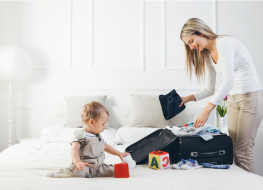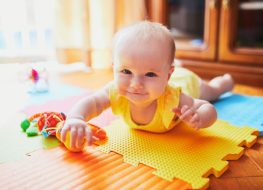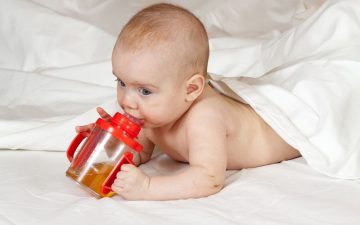
Your little one has just reached six months of age. Congratulations! It’s the perfect time to introduce your baby to solid foods and create more memories in this chapter of your family life.
But as exciting as it gets, it’s also a delicate phase that needs your utmost attention. Everything associated with feeding a baby—food, bottles, bowls, and little spoons—must be safe and appropriate to use. Otherwise, it can cause trouble for your little one’s sensitive body.
A crucial choice you have to make is which baby cereal bottle feeder to use. Unfortunately, not every product sold in the market is 100% safe. You have to familiarize yourself with them to ensure your baby’s protection. If you’re having difficulty learning it all, take a seat and read this guide.
Learn about baby feeders, feeding baby cereal through a bottle, some bottle-feeding precautions, and things to look for when buying a bottle feeder.
What Is a Baby Feeder Bottle?
Feeder bottles or baby feeders are a safe way to feed solid food to a baby. These foods are made into smaller pieces to minimize choking hazards.
There are five most common types of baby feeders, namely:
- Spoon feeder – A silicone storage with a dispensing spoon. You fill the silicone with soft solid food and squeeze it towards the spoon to feed the baby.
- Mesh feeder – A small mesh bag attached to a ring that babies can hold on to. You can put digestible pieces of frozen fruits or other foods in the bag to feed the baby. It’s also used as a teething feeder.
- Silicone feeder – A feeder with a small handle that’s suitable for babies around four months of age. In addition, they’re smaller and made for purees instead of larger solid food.
- Bottle feeder – A feeder that comes with a pacifier-shaped silicone feeder inside a bottle so you can squeeze out the food.
- Pouch feeder – A reusable squeeze pouch to feed pureed foods to your baby.
Is It Safe to Put Solid Foods Like Cereal in a Bottle?
As a new parent, you’ve probably seen or heard many parents putting cereal, frozen fruits and vegetables, and other homemade baby foods in a bottle. It’s almost like a tradition, so you might think that it’s okay. However, while it does help you introduce different food flavors in small and digestible pieces, it can also be risky.
There are essential things you need to know. Here’s what the experts say:
- Start bottle- or spoon-feeding only when the baby is at least 4 to 6 months old.
- It is best to start bottle-feeding when your pediatrician advises it. If not, it can increase the risk of choking.
- You also risk overfeeding. Putting it into a bottle can make the baby consume a large amount similar to milk, which is not ideal for solid foods like cereal.
- It doesn’t help improve sleep, despite some claims you might have been hearing.
- Babies 4 to 6 months or under might develop food allergies. During this period, their immune system is still developing a response to multiple food sources.
- It can lead to excessive weight or stool inconsistency.
What if the baby’s already six months old? Should I still worry about these things? It is best to keep their utmost safety in mind at all times. Even though they reach an age where they can deal with solid foods better, choking and overfeeding are still possible.
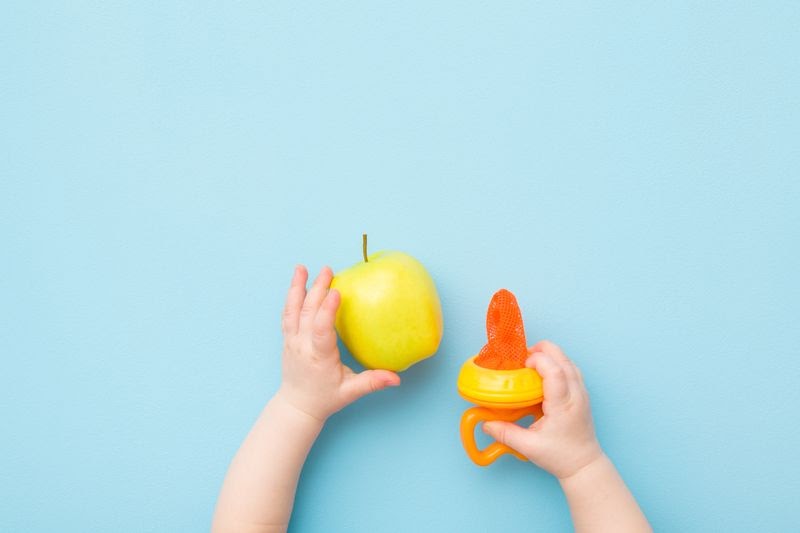
4 Things to Look for When Buying a Cereal Bottle Feeder
As you approach your baby’s first cereal feeding in a bottle, ensure that you know the right tool to use before actual feeding. That way, you can minimize the risks and make a wonderful, unforgettable memory with your little one. Seek the following factors when choosing a baby feeder.
A Safe and Easy to Clean Material
The golden rule when feeding babies is safety first. The most preferred feeder material is high food-grade silicone. It’s free from compounds that cause potential harm, such as bisphenol S, bisphenol A, latex, phthalates, lead, and petroleum. In addition, you can easily clean it in the dishwasher or by using warm water and soap.
A Handle With the Right Size and an Easy Grip
A baby feeder helps the baby develop self-feeding skills. The baby’s still trying to adjust, therefore, the tool should be easy for them to handle. A feeder should have a small handle that matches the baby’s hand size and offers an easy grip.
An Eye-Catching Color
Feeding your baby can be difficult if they’re not in the mood and keep refusing to eat. If you’re looking for a solution, visuals are an effective way to get their attention! It stimulates their brain and engages them in more activities. Choose a bottle feeder with bright colors to help you feed them effortlessly.
A Feeder With Extra Features
Feeder products sell through their unique points. You might find a feature from one brand that you won’t see in their competitors. When choosing a baby feeder, check the highlighted features and evaluate whether they can be of good use or not.
For example, get a baby food bottle feeder with great storage capacity, so you don’t have to keep refilling it. Having more than one feeding facility or an anti-colic bottle to reduce excessive workflow are also good options.
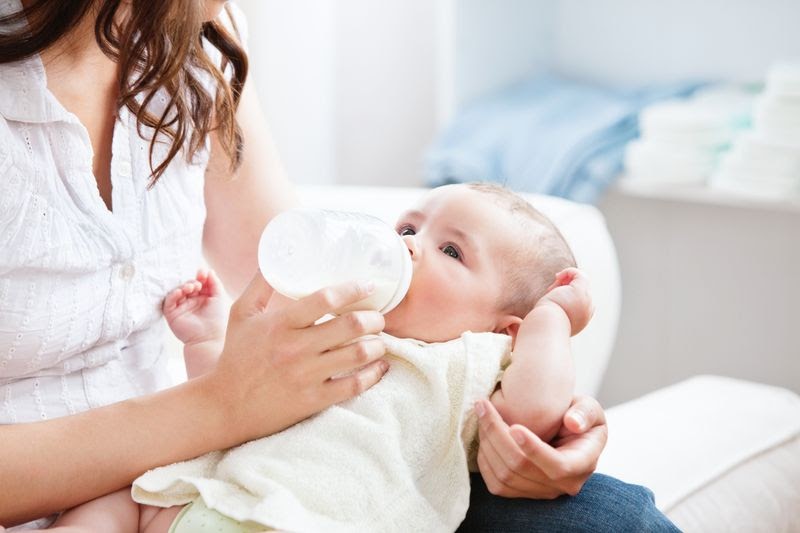
Bottle-Feeding Tips for Your Little One
You may have the correct and safe feeder, but it’s not going to do you any good if you don’t know how to feed properly. So before beginning with bottle feeders, check out these tips on how to bottle feed the right way.
Start Small
Offer small amounts of food in the bottle as a start. Babies have a delicate digestive system, so you have to be careful not to cause overfeeding and choking. Only when the baby shows signs of hunger should you start adding more.
Be Mindful of Signals
The baby’s signals are the best and quickest ways to learn the ropes of feeding. These cues show whether they feel full and want to stop, or the other way around—they want more food! Be very attentive to these cues to help you with safe and adequate bottle-feeding.
Get the Right Feeding Position
One thing to note on bottle-feeding positions is that you shouldn’t put the baby to bed while feeding. It can cause choking, tooth decay, and ear infections. Instead, aim for a sitting position and hold your baby close.
You should hold the baby at a slight incline and keep the bottle at an angle instead of in a straight position. Doing all this prevents choking hazards, difficulty burping, and allows the baby to have more control over their food intake.
Practice Safe Food Bottle-Feeding With AshtonBee
First times are often difficult, especially when tending to a baby’s needs. They are extremely delicate, so you must ensure that everything they consume is safe and appropriate for their age. With this article, we hope you can find a baby bottle feeder that fits your needs.
You can check out Ashtonbee’s Baby Fruit Feeder Pacifier for a start! It’s safe, easy to use, multifunctional, and low maintenance. We make purposeful designs to emphasize function above anything else, ensuring your baby’s safety and enjoyable experiences for your family.

